How to prune red currants in the fall, formation and rejuvenation of the bush
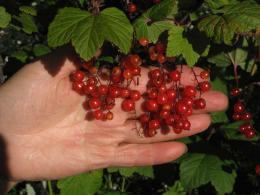
Red currants contain many vitamins and beneficial microelements. To take advantage of the gifts of fruit-bearing bushes, you should provide them with proper care, one of the conditions of which is pruning.
Let's figure out how to prune red currants in the fall, find out what procedures will help to properly form the bush, and also decide on the optimal time to carry them out.
Content:
- Types of pruning red currants
- What is the purpose of pruning, deadlines
- How to prune red currants in autumn
- How to rejuvenate red currants
- Formative pruning
- Bush
- Stamb
- Trellis
- Pruning red currants after harvest
Types of pruning red currants
At caring for red currant bushes From time to time it becomes necessary to prune branches that bear little fruit or do not bear fruit at all. It is also worth removing broken and low-growing shoots.
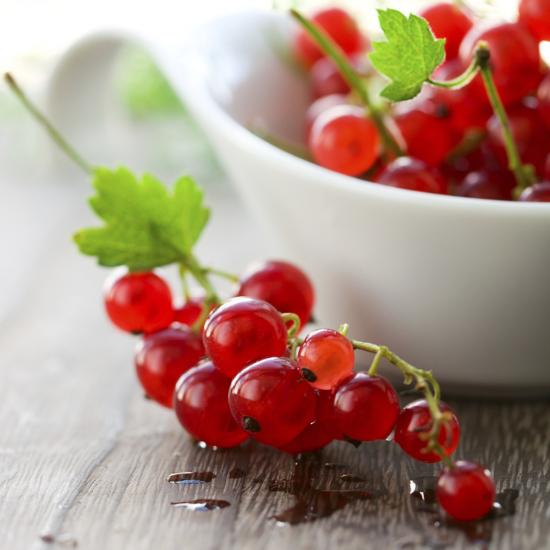
The yield of red currants directly depends on the degree of illumination of the bush. For this purpose, branches that block access to the main fruit-bearing shoots from the sun's rays are removed.
However, you should not cut off all the excess at once and in large quantities. In this case, the plant will spend energy not on vegetative processes, but on restoration.
In addition, intensive pruning often leads to the formation of spiny shoots - vertical shoots with weak branching. The top shoots do not bear fruit.
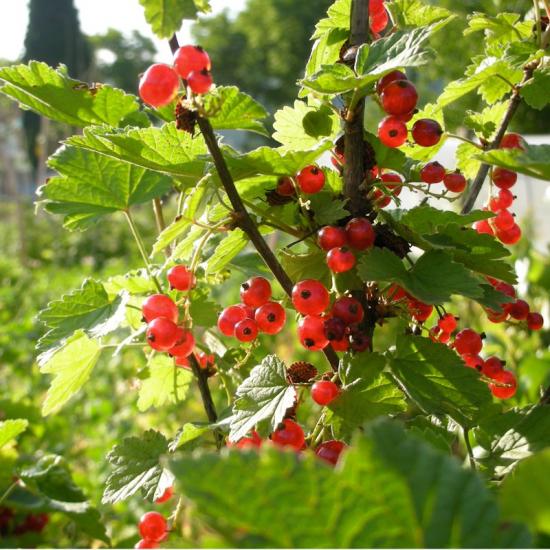
Before pruning red currants in the fall, you need to determine the specific purpose of the procedure being performed.
Within this criterion differentiate 3 types of pruning.
| Rejuvenating | The purpose of this pruning is to remove old, unproductive shoots. Red currant shoots stop bearing fruit at 6-8 years of age. |
| Formative | The procedure is needed to give the bush a neat or decorative shape, which also facilitates access to the harvest. |
| Sanitary | This pruning is not tied to a specific season. It is carried out from the beginning of spring until autumn. The point of the procedure is the timely removal of shoots infected with pests. Also, sanitary pruning after winter includes the destruction of branches damaged by frost or broken under the weight of snow. Removing thickening shoots and shoots growing inside the crown are also considered sanitary measures |
What is the purpose of pruning, deadlines
Some gardeners forget about their fruit-bearing plants immediately after harvest. However, lack of proper care has a negative impact on the level of fruiting.
Every year the quantity and quality of berries will decrease. To avoid such a fate, you should properly care for garden plants that seem unpretentious at first glance.
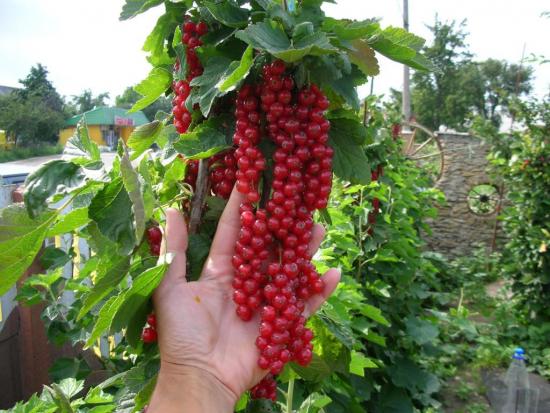
Pruning is a procedure that helps obtain a bountiful harvest; its main goals are:
- rejuvenation;
- obtaining larger berries;
- improving the quality of illumination of internal shoots;
- stimulation of the vegetative function of the plant;
- removing old, diseased, broken branches that receive nutrition without bearing fruit;
- simplification of care and harvesting.
Autumn pruning begins only after the branches of the bush are completely exposed.It should be completed before the first frost. The optimal time to perform the procedure is October.
Let's watch a video on how to properly trim red currants:
How to prune red currants in autumn
The structure of the red currant bush is similar to that of black currant. However, its shoots bear fruit twice as long. In addition, the formation of red currant berries occurs at the tops of the branches.

That is why you should not shorten the tips of mature processes, even if they stand out from the overall picture. Perhaps the shoot that disturbs the beauty of the bush with its length is in the prime of fertility.
The very first pruning is carried out after the autumn planting of red currant seedlings.
While the plant is at rest, the gardener shortens the shoots by 50% to the outer bud. A year later the procedure is repeated.
In the future, ongoing sanitation procedures will be necessary.
Red currants are very sensitive to lack of lighting. Excessive thickening quickly leads to a decrease in yield. The optimal number of shoots of red currant bushes is 15-20 pieces.
Video about pruning red currants in autumn:
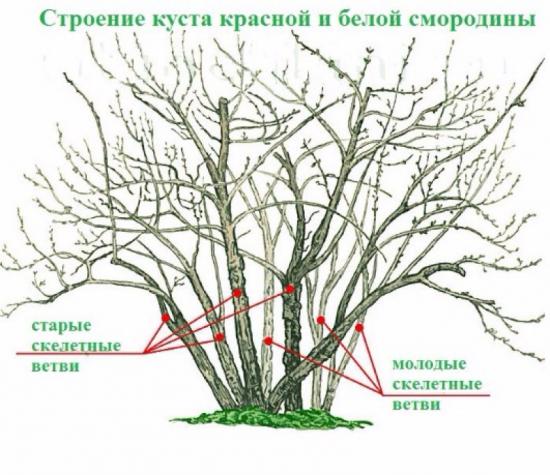
After 7-8 years after planting, annual anti-aging pruning is carried out. Proper rejuvenating and sanitary care of the red currant bush has a positive effect on the length of the plant’s life cycle.
On average, a carefully maintained shrub can actively bear fruit for 25-30 years.
There are several simple recommendations for pruning red currants that will be useful for beginners:
- the main task is to free the middle of the bush so that it can be fully illuminated by the sun’s rays;
- after pruning, there should be 4 shoots of each age left on the currant;
- to avoid damaging the kidney, the cut should be made at a distance of 5 mm from it. The pruning shears are held at an angle of 45 degrees to the shoot;
- the tops of shoots of 2 and 3 years old are not shortened;
- unproductive shoots are removed completely.
How to rejuvenate red currants
To rejuvenate an adult shrub, you should remove the oldest branches that have begun to bear fruit weakly or have stopped altogether. Such shoots are dark in color and thick, and older shoots are often affected by lichen.
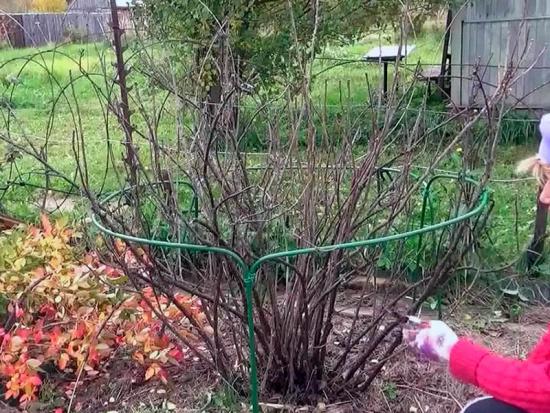
The rejuvenation procedure is usually performed for the first time in the 7-8th year after disembarkation. It should then become part of the annual redcurrant care routine.
For anti-aging pruning, the gardener will need pruning shears, garden varnish, fertilizing, and mulch.
This procedure is performed as follows:
- adult branches that have stopped bearing fruit are pruned at the root with pruning shears;
- cuts are treated with garden varnish;
- thin out the zero shoots growing in the depths;
- Fertilizers are carefully added to the soil. It is important not to damage the root system;
- the soil around is watered abundantly and mulched.
Formative pruning
With this procedure, the shrub gradually acquires a beautiful shape, and the gardener can only maintain it throughout the entire life cycle of the plant. In addition to decorative functions, such pruning helps to improve fruiting.
The choice of a specific form depends on how often the shrubs are planted. If the plant is densely planted, pruning should be more intense.
Bush
The most common form of red currant in the European part of the CIS is the bush one. Maintaining this form does not require much effort or special techniques.
To achieve a neat shrub, standard pruning recommendations should be followed.
Stamb
In Western Europe, the standard form of cultivation is more popular. This concept implies the formation of a bush on a single high trunk 20-25 cm high. The advantage of this form is that the berries are located quite high and do not get dirty on the ground. In addition, standard bushes look very elegant and unusual.
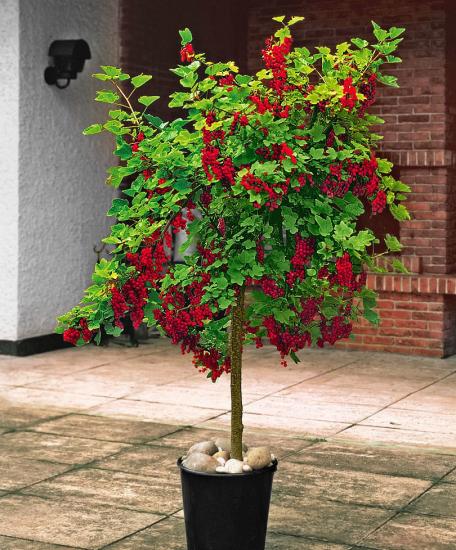
To grow a bush in European style, you should address this issue immediately after planting:
- It is necessary to completely cut off all processes except the central one. The remaining shoot (trunk) is cut in half to the side of the outer bud;
- the next year, all the buds are removed to the height of the trunk. To form the skeleton of the shrub, 4 multidirectional shoots are left. These branches are shortened by half to the outer bud;
- in the 3rd year, the trunk is cleared again, and the root shoots are also cut to zero. The most viable shoots of the 2nd order are left, shortening them by 50%;
- then you need to annually remove broken, damaged, pest-infested branches. During the period of setting berries, for better fruiting, unproductive shoots are shortened by 8-10 cm.
Not all varieties of currants allow high-quality implementation of the standard form. The most suitable for this are the Firstborn and the Dutch Red.
It should also be noted that shrubs that grow on a trunk have a shorter life cycle.
Trellis
The trellis-like shape of the currant bush looks very elegant. In addition to decorative functions, such planting greatly facilitates the process of fertilizing and collecting berries.
This form also opens the plant well to sunlight and insects that perform pollination functions.
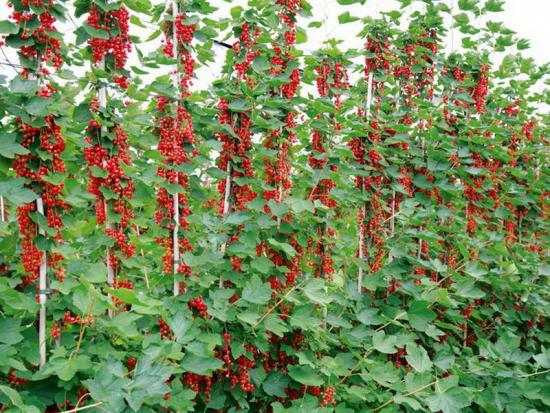
The formation of a bush on a trellis goes through the following stages:
- selection of seedlings with 3 well-developed shoots;
- the central shoot will act as a support, 2 lateral shoots are placed opposite each other at a height of about 30 cm from the soil;
- the formation of subsequent tiers as the shoots grow and the removal of excess branches;
- After the final formation of the trellis, the central shoot is cut annually to the lower bud. The lateral processes are shortened by 2-3 cm.
Pruning red currants after harvest
Some gardeners prefer to prune currants in the summer immediately after harvest.
There are quite good reasons for this:
- a large amount of sunlight activates photosynthesis processes in young shoots;
- the intensive growth of internal shoots at this time forms an elegant crown;
- there is no risk of cuttings becoming infected with fungal infections.
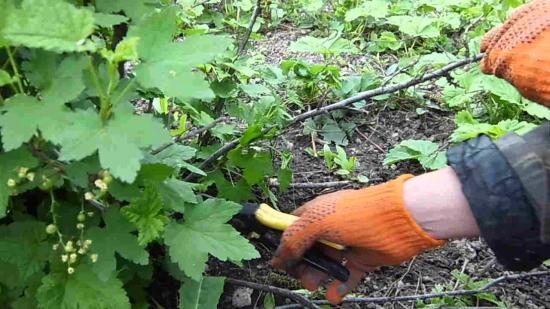
However, if any particular currant bush is characterized by too weak growth, the pruning procedure is postponed until autumn.
If a gardener wants to receive a bountiful harvest of red currants every year, you should not neglect timely pruning. This procedure rarely causes difficulties even for amateurs.
The main thing is to carry out the work during the period when the plant is dormant, and not to get carried away with excessive removal of shoots.

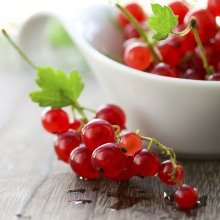

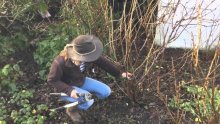
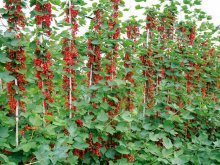
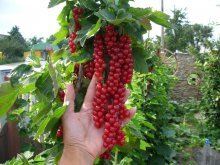
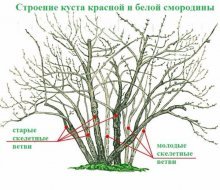
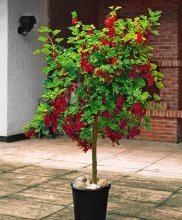
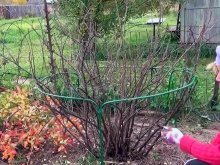
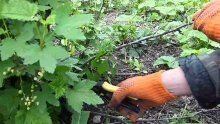
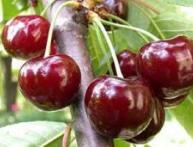
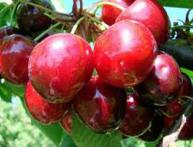
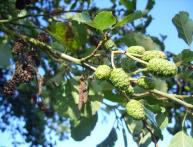
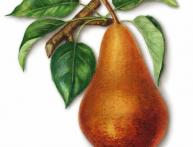
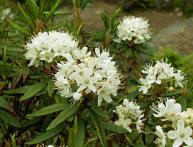
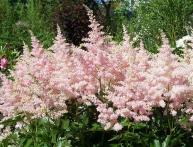
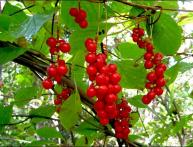
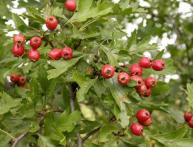
Comments
We only prune currant branches that have broken or dried out; the old ones are still bearing fruit, but unfortunately they are weak; apparently we will have to prune the plant a little so that it bears fruit better.
Unlike blackcurrant, we prune its bushes not so often, approximately once every 3 to 5 years.We do not touch young, well-fruiting branches of the bush, but cut out dry and old branches that bear fruit very poorly.
I have three red currant bushes, they grow on the outskirts, I don’t even harvest from them. We just don’t love her, and it’s a shame to take her out. She doesn't bother us. I don’t take care of it either, but it produces a lot of berries.